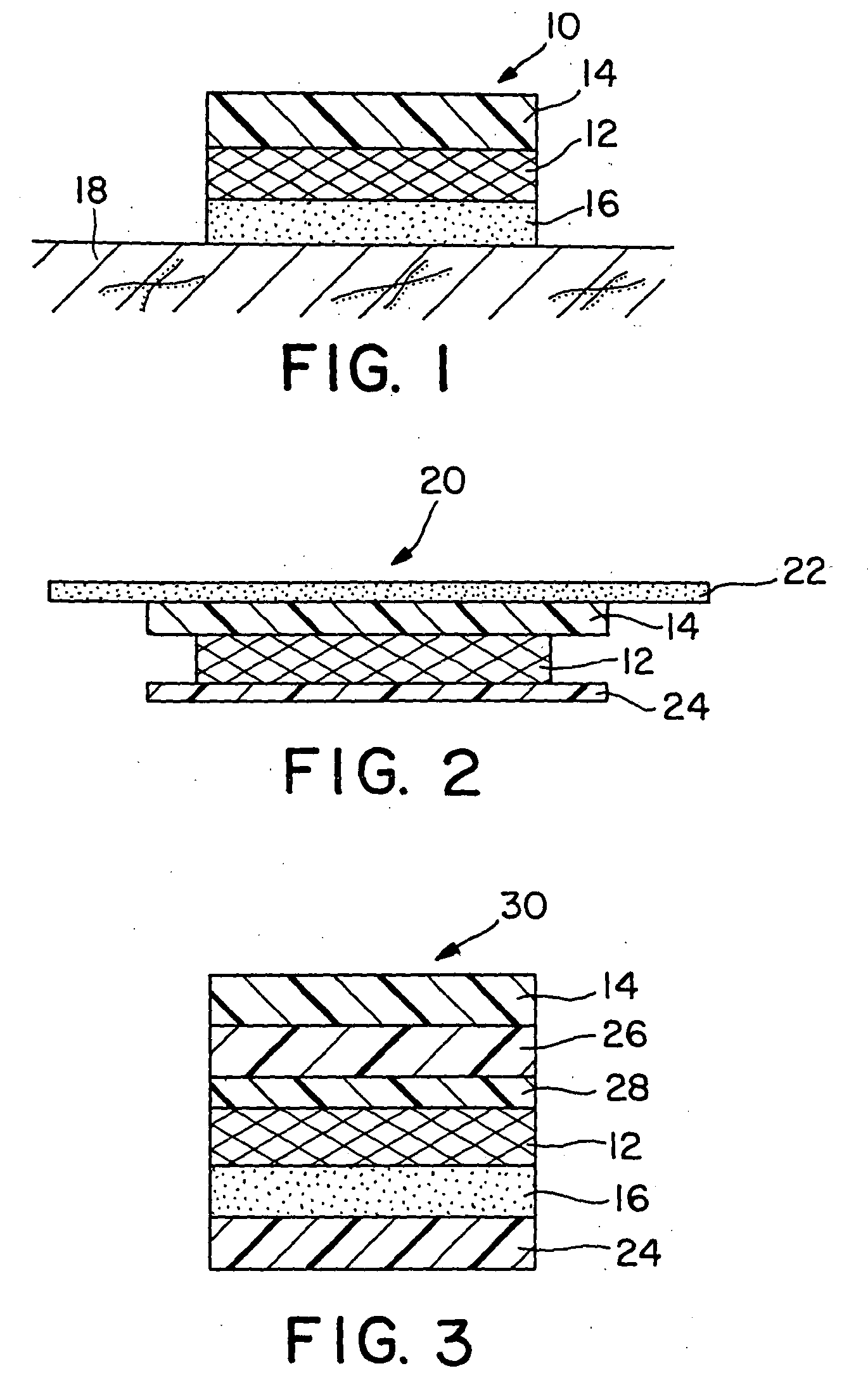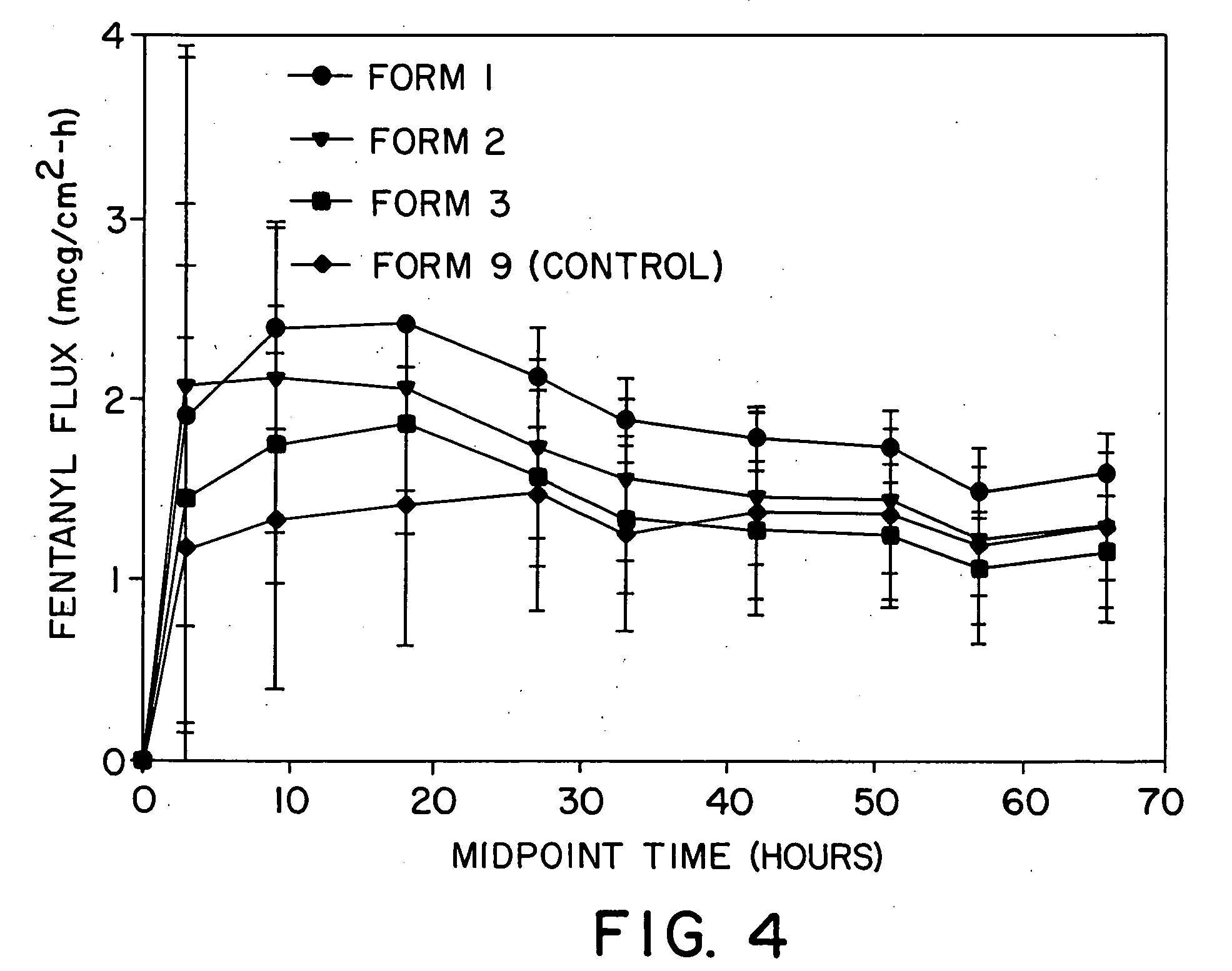Transdermal drug delivery devices comprising a polyurethane drug reservoir
a technology of transdermal drug and drug reservoir, which is applied in the direction of extracellular fluid disorder, immunological disorder, metabolism disorder, etc., can solve the problems of less attractive systems of this type for both manufacturing and cosmetic reasons, less attractive systems of this type, and inability to meet the needs of patients, etc., to achieve the effect of convenient processing
- Summary
- Abstract
- Description
- Claims
- Application Information
AI Technical Summary
Benefits of technology
Problems solved by technology
Method used
Image
Examples
example 1
[0076] Drug reservoirs were prepared by mixing fentanyl base, permeation enhancer, and polyurethane granules in a Brabender mixer (30 cc) provided with a heater in order to melt-mix the formulations. After mixing for approximately 30 minutes, the drug reservoir formulation was calendered into a 5 mil thick film. The film was then laminated to a backing layer (Medpar®, 3M, St. Paul, Minn.) which was subsequently laminated to an acrylate adhesive layer (NS87-2287, National Starch and Chemical Co., Bridgewater, N.J.). Circular systems having a 2.54 cm2 surface area were punched. The mix had a process temperature of approximately 65° C. System compositions are shown in Table 2. A Duragesic® (Janssen Pharmaceuticals) system prepared according to the method set forth in Example 1 of U.S. Pat. No. 4,588,580 was used as the control and had its surface area outside 2.54 cm2 masked to normalize surface area available for drug delivery.
TABLE 2Drug / Permeation Enhancer Reservoir CompositionSam...
PUM
| Property | Measurement | Unit |
|---|---|---|
| temperature | aaaaa | aaaaa |
| temperature | aaaaa | aaaaa |
| temperature | aaaaa | aaaaa |
Abstract
Description
Claims
Application Information
 Login to View More
Login to View More - R&D
- Intellectual Property
- Life Sciences
- Materials
- Tech Scout
- Unparalleled Data Quality
- Higher Quality Content
- 60% Fewer Hallucinations
Browse by: Latest US Patents, China's latest patents, Technical Efficacy Thesaurus, Application Domain, Technology Topic, Popular Technical Reports.
© 2025 PatSnap. All rights reserved.Legal|Privacy policy|Modern Slavery Act Transparency Statement|Sitemap|About US| Contact US: help@patsnap.com


